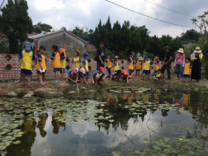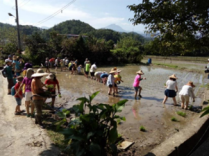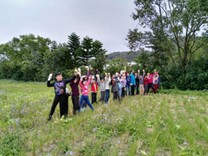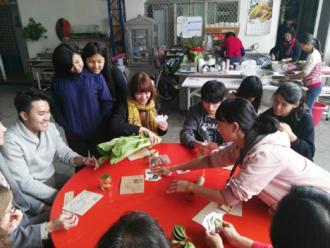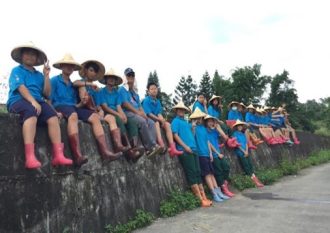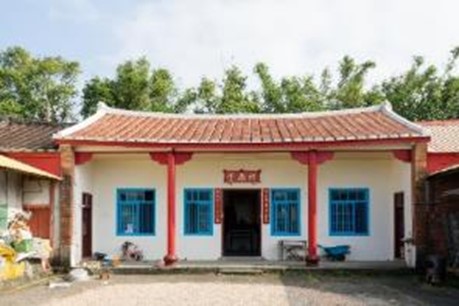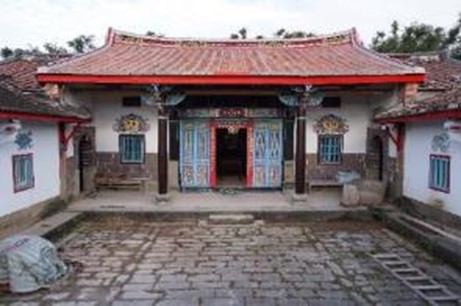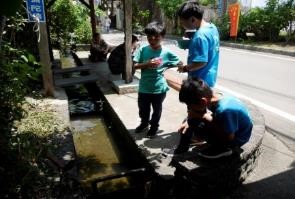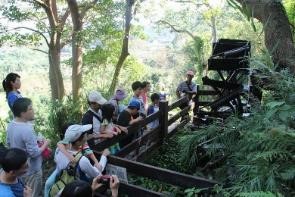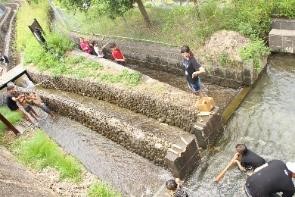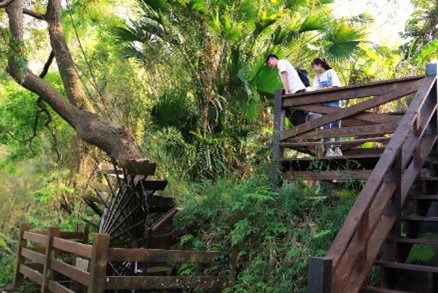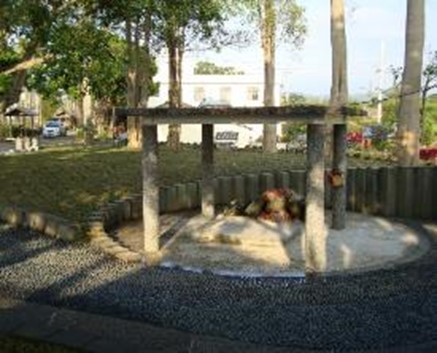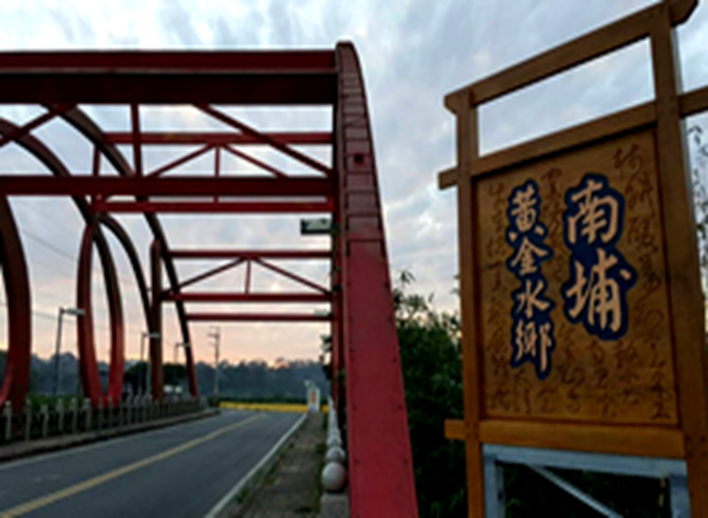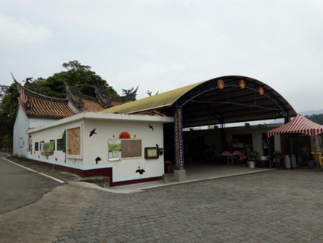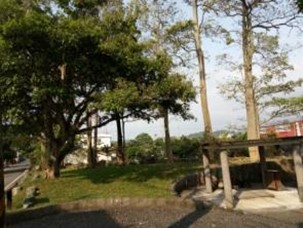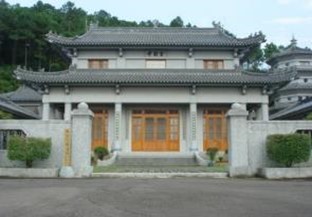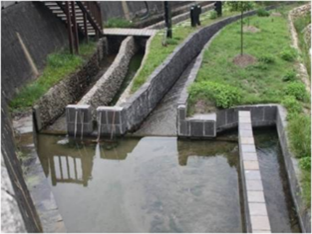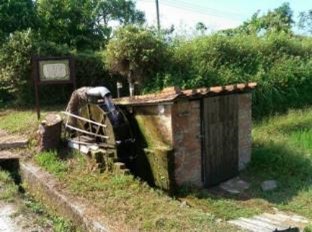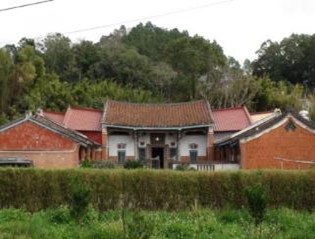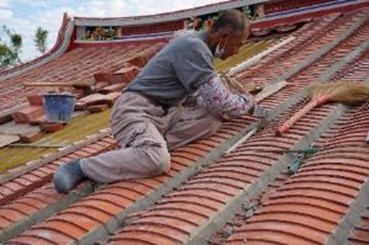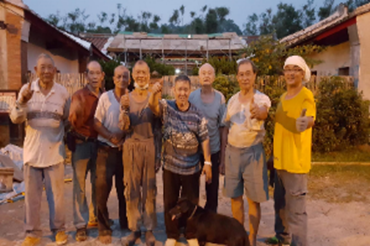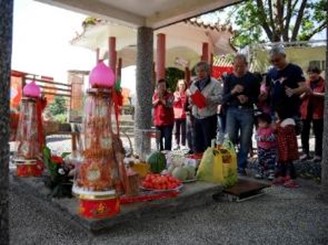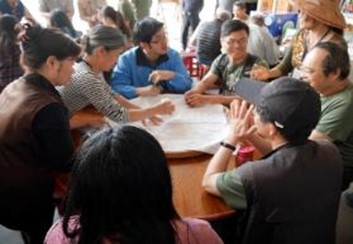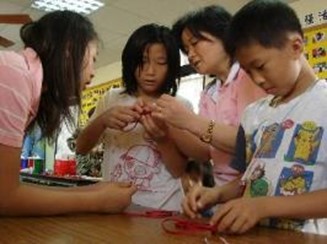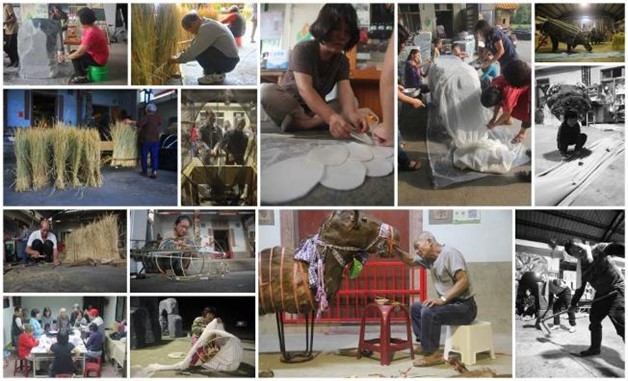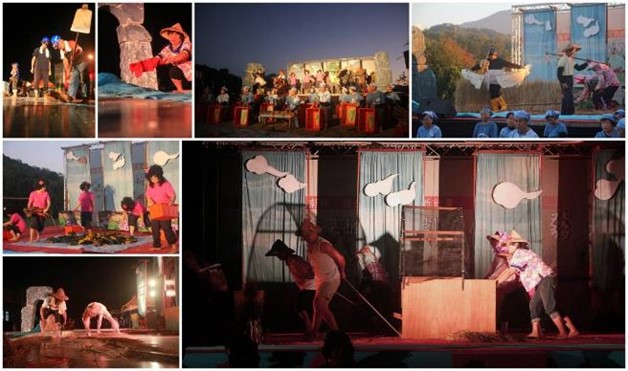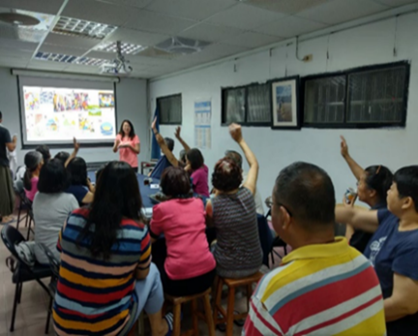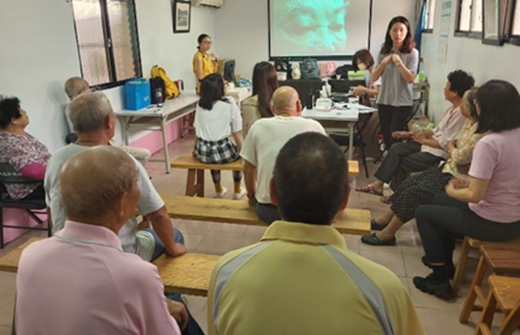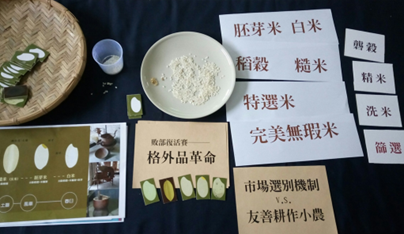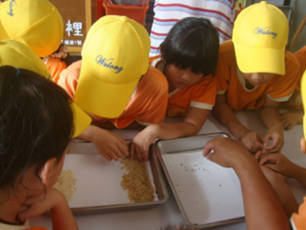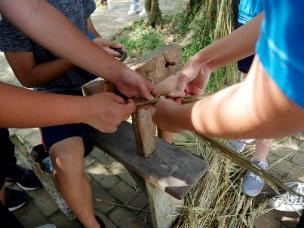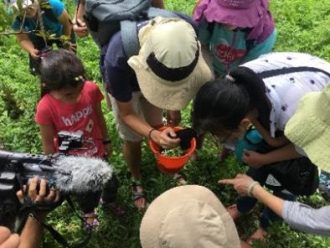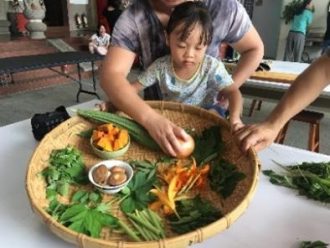Century-old Irrigation Canal Turn Hakka Micro Enterprise and Rural Culture
11.06.2024
SUBMITTING ORGANIZATION
Agency of Rural Development and Soil and Water Conservation , MOA , R.O.C.
(formerly Soil and Water Conservation Bureau (SWCB), Executive Yuan)
OTHER CONTRIBUTING ORGANIZATIONS
Hsinchu county Beipu township office
DATE OF SUBMISSION
May 2024
REGION
Asia
COUNTRY
Chinese Taipei
KEYWORDS
Environmental education, Hakka culture, Social value co-creation, Young people move to rural areas, Biodiversity
AUTHORS
Chen-Yang Lee1, Jin-Lung Tsai 2, Ling-Tsen Chen1, Hao-Yun Chuang1, Chia-Ling Hsieh2, Bing-Yi Juo2, Hsi-Chun Chen1, Jar-Jing Bao, Ming-Tseng Chuang3*
1 Agency of Rural Development & Soil and Water Conservation, MOA, No. 6, Guanghua Road, Nantou City 540, R.O.C
2 Taipei Branch, Agency of Rural Development & Soil and Water Conservation, MOA, No. 10, Jingzhong Rd., Xindian Dist., New Taipei City 231069, Taiwan (R.O.C.)
3 Hsinchu county Beipu township office, No. 20, Zhongshan Rd., Beipu Township, Hsinchu County 314001, Taiwan (R.O.C.)
* Corresponding: Ming-Tseng Chuang
Summary Sheet
The summary sheet for this case study is available here.
Summary
Nanpu has a composite rural ecosystem, which is the result of the interaction between the lifestyle of the people and the natural environment. Nanpu believe that we should put aside administrative boundaries, because the mountains, the water, the grass and the trees are inextricably linked. the concept of a co-prosperity with the environment needs to be guarded by all of us, break through institutional frameworks and regional scales, regardless of the administrative boundaries. Nanpu has always been based on the core principle of maintaining a balance between ecological diversity and resource sustainability, the overall awareness has been shaped for a longer period of time, and the implementation has become more mature. Nanpu was recognized by the review committee members and selected as one of the potential rural villages.
Starting from getting the support and experience from the youth and the core body of the organization, this will then spread to the surrounding rural groups and make the residents’ passion and understanding of their own hometowns’ land continue. Beginning with the establishment of concepts, this will drive the sustainable development of the community and implement the autonomous feedback, while the power of the rural community’s common growth will eventually be expanded to the whole environment and society, so that the land and the people will live and thrive together. From 2007 onwards, Nanpu has shifted from relying almost 100% on public sector projects to provide operating resources to the reduction of necessary resource application to 25% since 2023. Nanpu consciously plans to coexist with the environment as the benchmark and actively promotes the continuation of the sustainable value chain.
The community has also been able to improve its overall profitability due to the assistance of the youth, and to give back to the local elders for their care. It is very difficult to maintain basic operations and to take into account the quality of ecology and life in the local community at the same time for a community. Only by making adjustments to allow for appropriate improvements in the overall feedback mechanism, are we able to continue the operation.
The vision is to seek a balance between the preservation of biodiversity and the sustainable use of resources. Nanpu’s goals from the beginning to end are to work together to maintain a quality of life and friendly agriculture, to create a settlement of biodiversity for the ecological recovery, after the promotion of rural regeneration plan, young generation has consciously and actively expanded the scope of friendly farming and restored the operation of the ecosystem in the overlapping areas of life and production, resulting in an increase in biodiversity by 50-70%, and to implement the concept of “good ecology is the only way to have a stable and sustainable industrial development”, to promote the willingness of friendly farming (farmland), linking the different seasons of the colony and the natural features of the ecological environment, and to connect the ecological environment and natural scenery of different seasons and the flavorful crops produced in all seasons between settlements.
Introduction
Nanpu is a traditional Hakka settlement, known as the golden water town – it produces rice, citrus, persimmons, and sweet potatoes, plus the beautiful sunset, which represent the five golden images. There is a century-old artificial waterway that runs through Nanpu, giving birth to the life of Nanpu. In the early days, Nanpu was a rice warehouse of Beipu. With the changes of the times, Nanpu, like rural areas everywhere, gradually fell into silence more than a decade ago. With the implementation of the rural regeneration plan in 2007, as well as the strong cohesion and execution ability of the residents, Nanpu became the first community in Taiwan to pass the rural regeneration plan in 2011.
The century-old artificial waterway has been renovated, and after passing the Environmental Protection Administration’s Rural Ecological Experience Environmental Education Site Certification in 2013, it has started to provide environmental education courses to relevant authorities and schools.
The event “Swinging Nanpu and Inspiring the Rural Areas” was born through an innovative combination of percussion and drama. The members of the “Pickle Bucket Percussion Ensemble” are all elders in the community. They use their spare time from farming to accept the arrangement, direction, integration and training led by teacher Jinhui Chen. Pickle Bucket won the Ministry of Culture’s Village Drama Award for Best Drama in 2013 and was invited to perform 50 dramas across Taiwan in 2014, which received rave reviews. The media on both sides of the Taiwan Strait also reported on their performances. In their spare time from farming, the members used the pickle buckets that were readily available in the rural village to play music and incorporated local stories, traditional art formations, self-composed songs and dances. Their unique performances became extremely popular and enabled more people to know Nanpu’s stories.
The community has been promoting “friendly farming” for eight years. The friendly farmed Nanpu rice, which does not use pesticides or chemical fertilizers, has been on sale since the first batch of friendly farmed rice in 2012. For five consecutive rice harvests, all participating farmers’ rice was sold in just two months. The number of cooperative farmers in the Friendly Farming Plan has increased from two at the beginning to six at present, and the farming area has increased from three plots at the beginning to 9.5 hectares at present. Friendly Farming Plan has continued to promote friendly farming and expanded friendly farming area. The image brand of Nanpu friendly rice has gradually penetrated into the hearts of consumers in the Hsinchu area. Maintaining the quality of rice, expanding the support of the customer base, and increasing the area for friendly farming will be the focuses of the community’s future plans in order to continue to promote the development of the Nanpu community towards an ecologically sustainable industry.
Nanpu is featured by different farming experiences as the seasons change. With the strengthening of internal touring and ecological restoration capabilities, as well as the launch of the plan, Nanpu looks forward to linking and gradually establishing cooperative relationships with like-minded residents and partners such as towns and villages adjacent to Nanpu Village, to expand and promote rural groups where industry and ecology coexist.
After the promotion of the rural regeneration plan, together with the conscious and active efforts of young generation to increase the scope of friendly farming, the operation of the ecosystem was restored in the overlapping area of life and production in Nanpu, and the biodiversity increased by 50-70%. Nanpu residents jointly promote the concepts of innovative operation of agricultural industry, in-depth experience of humanistic farming, preservation of traditional culture and sustainable ecological conservation, which all are the ways to build sustainable operation of rural areas and ecological environment.
In addition, team partners have developed new models associated with rural development marketing, gradually proposed key points that can be improved on community conditions, and actively discussed and divided work with community partners to make improvements, such as form management system, warehouse management, unification of community inventory data, and development of small farmer links. Moreover, in terms of rural development marketing, the team has developed different itinerary models and summarized and evolved them, cooperated with rural junior high schools on food and agriculture education, calculated costs and unified activity process quotations, and connected with neighboring small farmers to train seed education teachers. After three generations of team changes, from 2007 onwards, Nanpu has shifted from relying almost 100% on public sector projects to provide operating resources to year-by-year adjustments to accumulate rural organizational resilience. Nanpu survived the hardships during the pandemic until the necessary resource application was reduced to 25% from 2023. Nanpu consciously plans to coexist with the environment as the benchmark and actively promotes the continuation of the sustainable value chain. Moreover, Nanpu won the Council of Agriculture’s 1st Rural Gold Medal Award and the Ministry of Environment’s 5th National Environmental Education Award for Excellence in 2018. Nanpu also hopes to expand resources and train more partners to invest in rural regeneration to create greater benefits.
Socioeconomic and Environmental Characteristics of the Area
1. Environmental characteristics
Beipu Township is located in the southeastern corner of Hsinchu County, with the following geographic boundaries: Zhudong Township to the east, Emei Township to the west, Baoshan Township to the north, the foothills of the Wuzhi Mountains to the south, and Nanzhuang Township (Miaoli County) to the southwest. Nanpu is located in the southwest of Beipu Township (Hsinchu County), with Provincial Highway 3 crossing in the north, neighboring Dalin Village in the east, Nankeng Village in the south, and Emei Township in the west across the Daping river. The terrain is surrounded and cut by Daping River in the east, north and west, so Nanpu Terrace was formed, and the geographical environment of the village of being “surrounded by mountains and water” and “spacious in front and solid in the back” is formed. With an altitude of 90-344 meters, and the topography high in the south and low in the north, the village is adjacent to Dalin Village and Nankeng Village in the east, bordered by Emei river in the west and south, and Puwei Village in the north. Its total area is 5.45 square kilometers (i.e., about 519 hectares), of which only 15% (i.e., about 80 hectares) is agricultural land, and only 15% of the area is utilized by the existing farms and houses. In the south, there is a hillside reserve area, and about 70% of the area is used for forestry, agriculture, animal husbandry and mining, which is rich in flora and fauna as well as shallow mountain resources.
Nanpu Village has a subtropical oceanic climate and is not affected by the greenhouse effect caused by air pollution in the neighboring metropolitan areas as it is surrounded by mountainous and hilly terrain. The average monthly maximum humidity in Nanpu Village is 85% in February and March, the average monthly minimum relative humidity is 79% in July and October, and the average annual relative humidity is 82%. The relative humidity between 40~60% in the air is most comfortable for human beings, so the humidity in Nanpu Village area is on the high side throughout the year. According to the website data of the Central Weather Bureau, the average monthly high temperature is 34.2℃ in July, the average monthly low temperature is 11.8℃ in January; the average annual high temperature is 26.2℃, the average annual low temperature is 19℃, and the average annual temperature is about 22.3℃. The Nanpu Village area is characterized by significant temperature variations between summer and winter, with four distinct seasons; observations of existing plant species in the area also reveal significant differences in plant traits depending on temperature.
The main river in Nanpu is “Daping River” which runs around from east to north and curves to the southwest into the Zhongxing Village area of Emei Township. After entering Emei Township, it is called “Emei River”. The tributaries of “Daping River” flowing through Nanpu Village are: Panpakeng Wild Creek, Beipu Wild Creek, Po Mei Wild Creek and Nanpu Canal, Nanpu Canal was dredged in the middle of the reign of Emperor Daoguang of the Qing Dynasty, which has a history of 100 years till now. Although the agriculture pattern has been transformed into diversified development gradually, Nanpu Canal still remains to be the most important canal for agricultural irrigation in the community; and the waterwheel used to be an important tool to assist the agriculture in the past, and now there is a waterwheel in the community that is in continuous operation, which is of great cultural value in the countryside and can represent the old rural image. During the typhoon seasons in summer and fall, although the area rarely suffers from serious typhoon damage, the large amount of rainfall carried by the typhoons often causes the water level of the streams to rise sharply, resulting in a large amount of soil erosion, which can easily jeopardize the safety of the local residents, and is a major natural disaster. The annual rainfall is about 1,782 mm, the annual relative humidity is about 89%, and there is a lot of northeast monsoon wind (commonly known as “Nine Drops Wind”) from September to December. Occasionally, strong seasonal winds in Nanpu Village form a “wind corridor effect” (i.e., the wind direction is not fixed or the wind speed may suddenly increase) along the valley between Dahu Mountain and Dafenlin Mountain, and the humidity between the valleys is also brought along with the “tidal wind” to erode parts of the northeasterly and northerly zones of the area.
The soil distribution in Nanpu Village mainly consists of alluvial soil, colluvial soil, red loam, yellow loam, limestone soil, and stony soil. According to the data of Academia Sinica, there are two geological lines passing through the area, namely “Dapingdi Fault” and “Luchukeng Anticline “, and there are six kinds of stratigraphic layers: Holocene Alluvium, Pliocene Choran Formation, Late Pliocene Chinshui Shale, Pliocene Erjiu Formation, Late Miocene Dapu Formation, Middle and Late Miocene Nanzhuang Formation. The slopes of the hilly area on the west side of Nanpu range from 30-75% on average, while the slopes of the valley areas along the valley sides are gentler, thus the basin slopes are about 15% or less, which is the main agricultural area and the population gathering area.
2. Environmental characteristics of the study area
1. Population
The study area is Nanpu Village in Beipu Township, with a total area of 5.45 square kilometers (i.e., approximately 519 hectares). The altitude of the study area Nanpu ranges from 90 m to 344 m above sea level, and the topography is high in the south and low in the north, with a hillside reserve in the south. Nanpu Village has a population of 414.
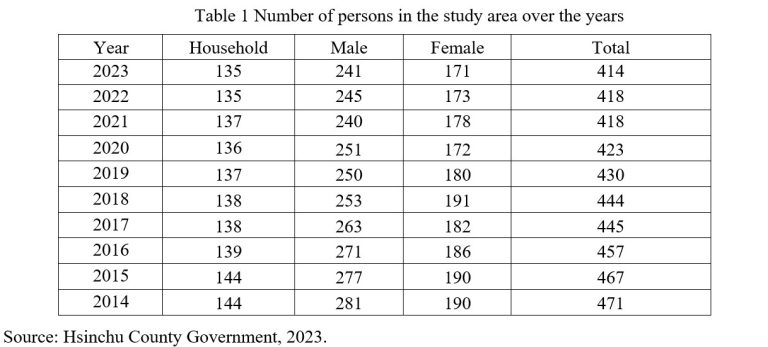
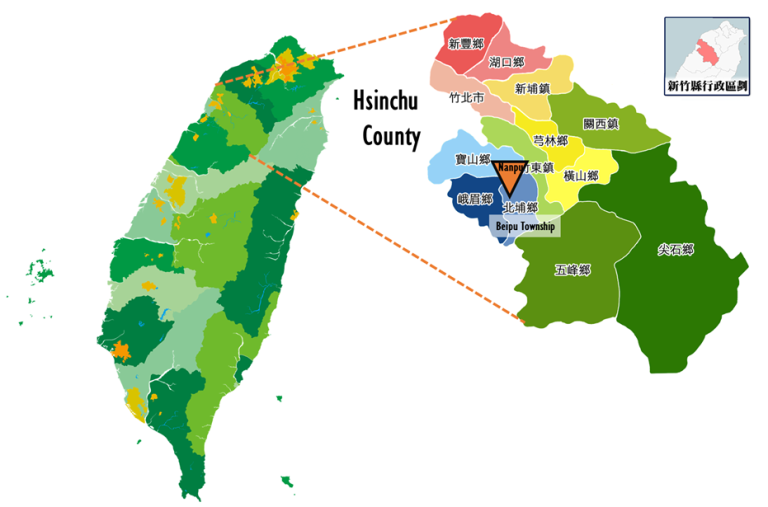
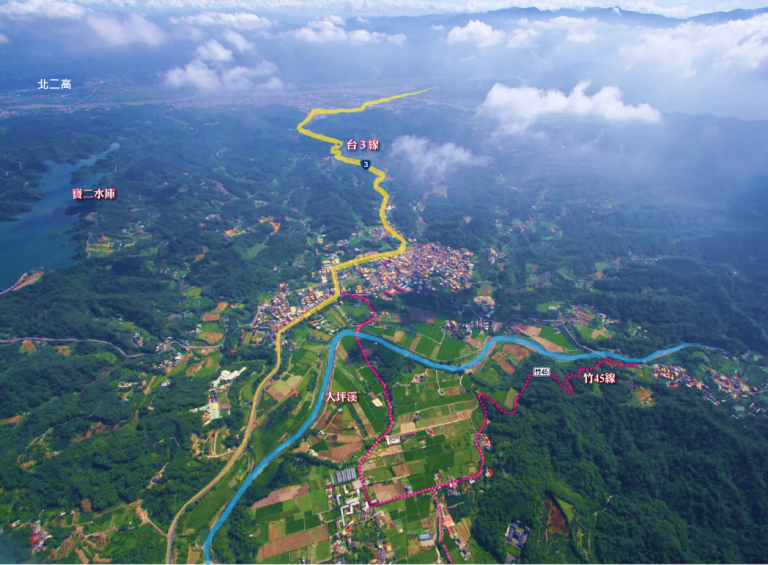
2. Plant resources
The total area of Nanpu Village is 5.45 square kilometers (i.e., about 519 hectares), of which only 15. % (i.e., about 80 hectares) is “land for agricultural cultivation”, only about 15% is existing “rural residential land”, and about 70% is “land for mountain, forest, agriculture, animal husbandry and mining”.
There are many differences in the opinions among experts and scholars regarding the division of “vegetation formation” in Taiwan, but the author recommends that according to the division method of [Overview of Tree Distribution in Taiwan of Chung Hsing University], the “vegetation formation” in the Nanpu area can be summarized as “subtropical and warm-temperate forest formation” of the “forest formation type”.
The “subtropical and warm-temperate rainforest formation” is mainly distributed in the northern region of Taiwan with altitudes ranging from 500M to 1800M and in the south-central region of Taiwan with altitudes ranging from 700M to 2100M, dominated by Lauraceae oak association, followed by broad-leaved forests such as Michelia compressa, Gordonia acuminata and Schefflera heptaphylla, and other scattered conifers such as Podocarpusneriifolius, Podocarpus nagi, Pinus taiwanensis, Pinus massoniana, and Keteleeria fortunei. The man-made forests are mostly made up of Cryptomeria fortunei, with Aleurites montana, phyllostachys bambusoides, and phyllostachys edulis in between, while the “pioneer species” of this formation are Mallotus L., Macaranga tanarius, Broussonetia papyrifera, Trema orientalis, Mallotus paniculatus, and Rhus chinensis Mill. var. roxburghii (DC). Rehd. The dominant species are: Liquidambar formosana, Quercus glauca jhunb, Alnus formosana, Quercus variabilis, Taiwan beech, Cinnamomum camphora, and so on.
The main “vegetation formation” is mainly distributed in the “land for mountain, forest, agriculture, animal husbandry and mining”, followed by the border area of the “land for agricultural cultivation”. Based on the current situation, the main ecological characteristics of the vegetation are as follows.
- “Land for mountain, forest, agriculture, animal husbandry and mining”: Most of the land is covered by “Taiwan native plants”, followed by a small area of “afforestation plants” and “fruit trees for cultivation”.
- “Land for agricultural cultivation”: Mostly “agricultural plants”, with few “Taiwan native plants” and “fruit trees for cultivation” in the border areas.
- “Rural residential land”: Mostly “horticultural landscape plants”, mixed with a few ” fruit trees for cultivation”.
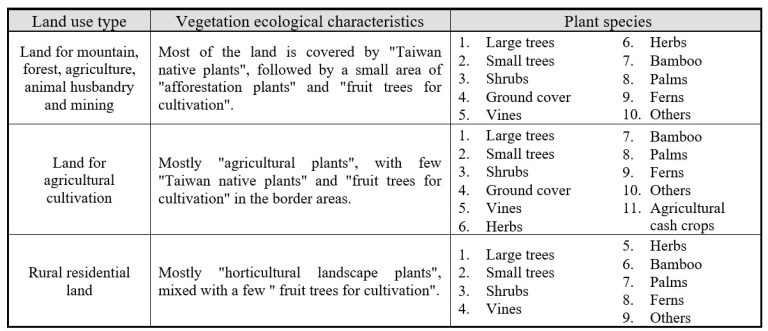
3. Animal resources
Before participating in the rural regeneration plan, most farmland areas in Nanpu used agricultural pesticides for field management, resulting in a single ecological item. With the overlapping of life and production areas, residents at that time had relatively weak awareness of the environmental protection. As a result, overall, it was rare to see a relatively complete ecological system emerging in the life and production areas.
After starting to engage in the promotion of community building and rural regeneration in 2003, he has gone through a series of courses and trainings, farmers in Nanpu Village look forward to producing local crops by inheriting the farming methods of their ancestors, utilizing the principles of primitive farming, and replacing pesticide application with manual hoeing to minimize agricultural pollution and keep the crops alive. Egrets are often seen in the rice paddies in the valley, and the natural ecosystem nurtured by the valley is even more vibrant, with seasonal interludes of birdsong and insect songs, fragrant flowers and green grass. In early summer, dragonflies and butterflies can be seen flying freely in the daytime, and at night there are fireflies reporting for duty; in the fallow winter, the plots of flowers of rapeseed and purple patchouli are so spectacular that people are amazed by them.
For the sake of further documentation, Nanpu, the eco-partners and The Society of Wilderness have been working together to conduct a survey of Nanpu’s natural biological ecology from 2014 to 2018. In addition to the common flora and fauna of the village, such as Lagerstroemia subcostata, zanthoxylum ailanthoides, Taiwan barbet, blue magpie, white-breasted waterhen, wild boar, ferretbadger, the biological species include the mountain shrimp (Macrobrachium lar), Hypsipetes leucocephalus, Prinia inornate, and many frogs, such as: Fujian large-headed frog, Latouchte’s frog, Rana longicrus, Kurixalus idiootocus, Gunther’s frog, Swinhoe’s frog, Bufo melanosticus, Polypedates braueri, Microhyla fissipes. In addition, many insects have also been observed, including Neptis nata lutatia, Athyma cama zoroastes, Vespa mandarinia, Vespa affinis, Xylocopa sinensis Smith, Mutilla pungens, Paracercion calamorum dyeri, Protaetia orientalis, Mimela testaceoviridis, Anoplophora chinensis, Campsosternus auratus, Aleurocanthus spiniferus, Orthetrum pruinosum, Hestina assimilis formosana, mayfly, Araneus mitificus, Odontolabis siva, Oxyopes sertatus, Riptortus linearis, Chlorophorus signaticollis, Thiania subopressa, Euphaea Formosa, Prodasineura croconota, Pachyneuron aphidis, and Amegilla calceifera. Protected species are also often found in Nanpu Village, such as Mauremys mutica, pangolins, and Rhynchophorus ferrugineus. The investigation also found that in the symbiosis between crops and weeds, the number of weed species has affected species richness, and the overall biodiversity in the overlapping area of life and production has increased by 50-70%, which is also the most gratifying achievement after Nanpu developed the coexistence of life and production ecology.
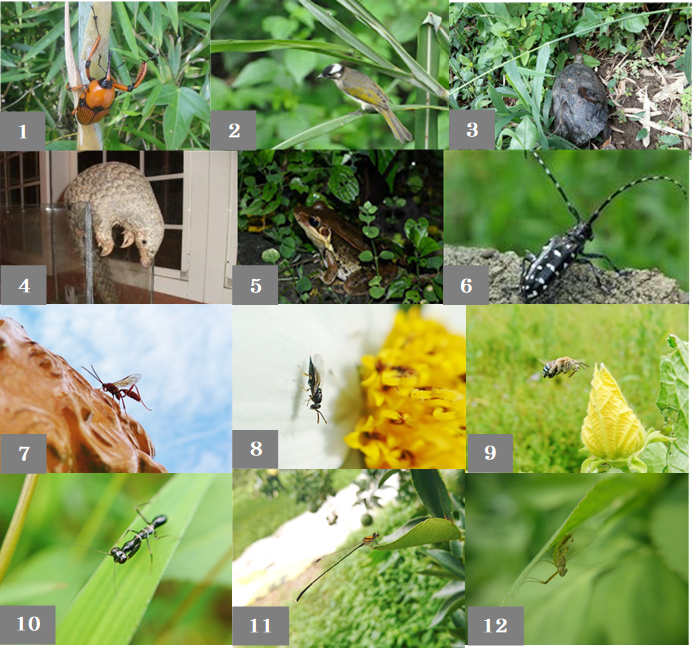
Description of Human-Nature Interactions in the Area
Cultivation model of environmentally friendly partner
Nanpu is rich in rural human history, natural ecology, canal irrigation and other resources. In 2013, Nanpu was certified as an Environmental Protection Environmental Education Center, and it applies the rural life and ecological environment to design in-depth tours that are both entertaining and educational. Through the different agricultural experiences of seasonal changes, the users will be able to increase the ability of guiding and ecological restoration via education and training, so that the community can promote humanistic eco-tourism, cultural preservation and ecological conservation at the same time.
Nanpu advocates that life, production and ecology should be intertwined, and promoted based on the overall development of rural areas, so that more people can feel the original appearance and spirit of the countryside. After years of efforts, the micro-industry is blossoming in the area, and the residents hope to promote the principle of holistic agriculture with natural farming methods and friendly environment farming for the unused and fallow farmland; Nanpu actively encourages young people to come back to the village, increases employment opportunities by providing the opportunity for young and middle-aged people with the same aspirations to serve in Nanpu Village, work in agriculture as a self-employed, or start their own business. It is hoped that through the coexistence of low-density industries with nature and the promotion of a small number of diversified industries, we can minimize the impact on nature and life, and practice the concept of Lishan and slow living.
1. Nanpu Gudong Club
Since its inception in 2012, Gudong group has accumulated a lot of support for friendly farming, and has been introducing the Gudong system to more people through sales promotion and community visits to increase the opportunity for direct contact between consumers and farmers. From time to time, “Nanpu Gudong Club” reports the status of the countryside on Facebook, and provides the latest information for the Gudong members to have a platform to get information on rural rice farming. The annual income of the community is about one million NTD, which supports the basic operation and ensures the stable purchase price for the farmers working by contract to prevent the livelihood from being affected by the market fluctuations, so that they can operate independently with the basic principles of operation.
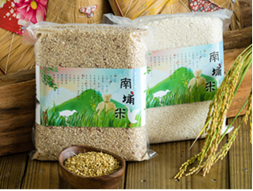
2. Pupai No.1 and Bamboo Dragonfly Green Market
There is a booth of Pupai No.1 at the temple in Nanchang Palace, showcasing small farmers’ products – Nanpu rice, Mama Mia rice, kumquat cake, kumquat dew, olive tapenade, roselle jam, brown rice flour, whole bean soy milk and other friendly farming ingredients. Moreover, the marketing of diverse Nanpu agricultural products in small quantity is jointly operated by the Development Association and local small farmers for exhibition and sale at Bamboo Dragonfly Green Market of National Tsing Hua University twice a month. They both help in the process of promoting the industry, and the revenues from the booth at the temple set by the community and the green market are given back to the community in proportion.
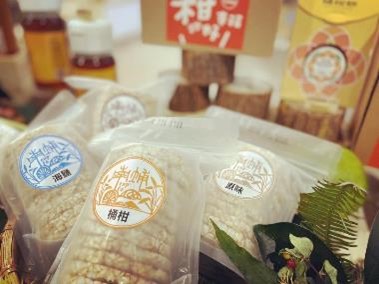
3. Nanpu small farmers
In the process of promoting the concept of friendly environment and coexistence with nature, many local farmers, business owners or small farmers who share the same beliefs have been attracted to move in and deepen their farming in Nanpu, such as: Mama Mia, Hoyue Bamboo Farm (WWOOF B&B), BK Chai Kiln Bakery, Letianyuan, Lifang Orange Shop, Good Vegetable Army, Grandma Mak’s Happy Vegetable Garden, Nanpu‧Funloho, Fengtian Natural Toxin-Free Fermented Chicken Farm, etc. We hope that, with their respective specialties and common philosophy, they will rationally utilize local resources to provide basic necessities in the village, cultivate local culture, increase local biodiversity, and achieve the goal of sustainable use of the environment.
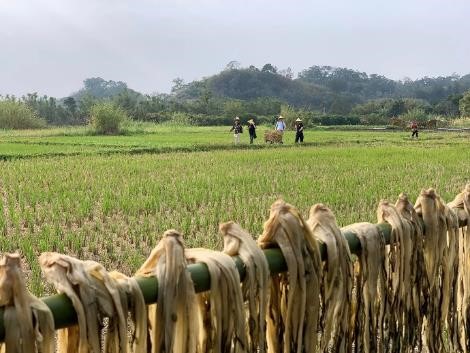
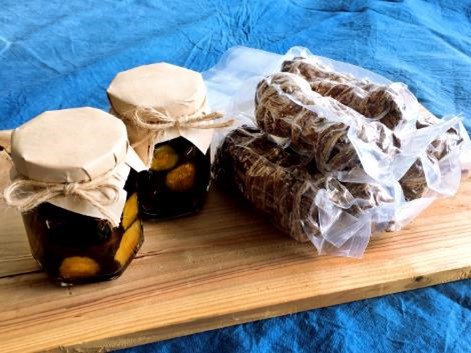
Rationale
-
Loss of irrigation function of the canal as the agricultural lifeblood led to the decline of the rural area
Nanpu Canal, located in Beipu Township (Hsinchu County), was built in 1845, when the ancestors dug the canal from the source of Beipu Cold Spring, cut through 21 tunnels to divert water into the village from the source of Daping River. The total length of the main line and the branch is about 9 kilometers. Being more than 170 years old, Nanpu Canal is the lifeline of Nanpu Village, irrigating more than 58 hectares of rice paddies in the early days, and it’s also the barn of the Beipu area. The water is diverted to Nanpu to irrigate the rice paddies that grow in golden color here.
Nanpu was facing the increasing problem of canal functional failure. As Nanpu Village is located in the middle and lower reaches of the river, and because of the cave collapse, the difference between the high and low levels of the river, the broken canal road and the leaking canal since the 1999 Jiji earthquake, the amount of water that could be obtained is getting less and less every year. Half of the village’s farmland has been forced to fallow, and the upper part of the canal road is found to be in a state of disrepair during the patrols, the residents were feeling desperate while most of the farmers who still stayed in the village wanted to continue farming. Nanpu residents rely on Nanpu Canal, which was built more than a century ago, for their irrigation and livelihood.
-
Reconstructing the canal is difficult and dangerous because of digging the canal road again
Nanpu residents have a common understanding of the existence for the canal, because there must be sufficient irrigation water for rural development and life. They are aware of the urgent need to repair the canal but cannot immediately make a decision, as the main reason is a complete fallow period for one year is required for repairing the canal, which will cause a very big impact on most of the farming residents of Nanpu who rely on agricultural production. There are four main reasons why the canal repair process is so difficult, and they are described as follows.
(1) Economic problems
Taiwan is a democratic country, and the residents are also very opinionated. Knowing that the fallow for at least 1 year means no income at all and makes it difficult to maintain their livelihoods, they then began to have different views and tensions, and thus it took two or three years for the collection of views and consensus building.
(2) Land issues
Since the government implemented the “Land for the Farmer” program and the “Rent Reduction” program in the past, many of the farmers were afraid of signing the consent form. In addition to persuading the signing of the land consent form, the Ministry of the Interior conducted a land resurvey and fine-tuning of the land use, and some of the residents argued that the Irrigation Agency had taken over their land, and demanded that the land ownership be restored.
(3) Water right issues
When all the villagers finally decided to lie fallow for a year and the funding to repair the canal was obtained, the issue of water rights became complicated because the repair of the canal is the responsibility of the Irrigation Agency, and the source of the canal is governed by Second River Management Branch, Water Resources Agency, Ministry of Economic Affairs. The canal passes through the private land of different landowners along the way, so the “water right” of Nanpu Canal belongs to “Miaoli County, Irrigation Agency, Ministry of Agriculture”, and is not under the jurisdiction of “Soil and Water Conservation Bureau, Ministry of Agriculture”, which is willing to invest in the improvement.
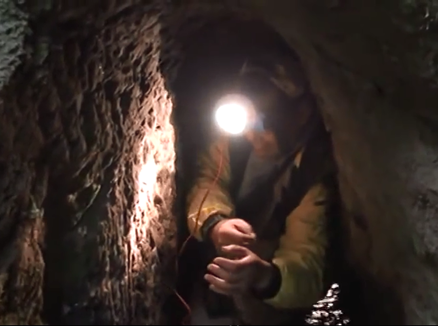
(4) Technical problems
Moreover, the canal needs to be desilted, but because the height of each tunnel of the 100-year canal is different, at some points, the desilting work can be carried out by people standing up, while at other points, the desilting work can only be completed by people crawling on their hands and knees. The team of engineering professionals at that time were at their wits’ end, as the professionals with tunneling experience are needed for repairing the tunnel. As found from the inspection of the internal canal road, a number of sections of the canal collapsed seriously, and there may be a danger of recurrence of collapse, and it is even necessary to consider the problem of oxygen in the process of desilting, as even methane will be generated.
Although the canal is an important economic and cultural lifeline for Nanpu, various limitations such as economic, land, water rights, technological challenges, and the lack of precedent to build on have extinguished the hopes of the youth and residents who have been working so hard to build a consensus in the face of reality.
-
Taiwan’s industrial transformation, linking rural life and cultural context
Nanpu Village has been a farming village for more than a century. In addition to rice, the village still has citrus orchards, persimmon orchards, bamboo groves, sweet potato, taro fields, and other cash crops; it used to be rich in silica sand and coal mines, which drove the economy of the area, and the hillside areas were mainly forested. At that time, Taiwan was following the industrial transformation from agriculture to light industry, and continued to the next goal, to heavy industry and technology industry. After the establishment of the Hsinchu Science Park, the young and middle-aged population moved out, so now there are only about 400 people left in Nanpu Village that originally had 1,500 people. When the young and middle-aged population have moved out of Nanpu Village, the elders stay in their hometowns, lacking of care, the culture and life in the rural areas are also slowly disappearing due to the industrial transformation, and the connection between people is also weakened due to the industry and the siltation of the canal.
Activities and Practices Employed
I. Agricultural education and promotion:
Nanpu used to be a barn for Beipu, and it has regained its past flavor after the restoration of the canal. To date, it is promoting friendly farming as a vehicle for implementing food and agriculture education. In order to reflect the inheritance and embodiment of the essence of rural production, it seeks to integrate participants’ concepts of food and agriculture with their actual life experiences through experiential activities, and to promote the integration of local agricultural production and ecology. What is more important is to cooperate with neighboring schools in their courses to provide a long-term and stable community-based experiential education field
- Hardware and software construction- exhibition hall of farming tools, documentary of ancient farming tools operation.
- Abundant video recordings (canal dredging documentary, cultural and historical interviews, ecological surveys).
- Community integrity and openness: friendly ecological and cultural sites, interpretation and indicator systems.
- Community management (Facebook, data storage blogs) to connect residents emotionally and increase public interaction.

- Environmental education
The environmental education field in this community aims to implement the industrial ecology as well as food and agriculture education “from production to life/from seed to table” in the early and middle stages, and has introduced such programs including Nanpu Canal tour, paddy field ecology, green energy, rice milling experience, as well as straw rope making and ecological purification ponds, with about 1,000~2,000 visitors to Nanpu every year to verify the environmental education; while the planning of long-term program structure is to go deeper into the dimensions of local history and culture, and to develop teaching plans related to humanistic history and Hakka culture.
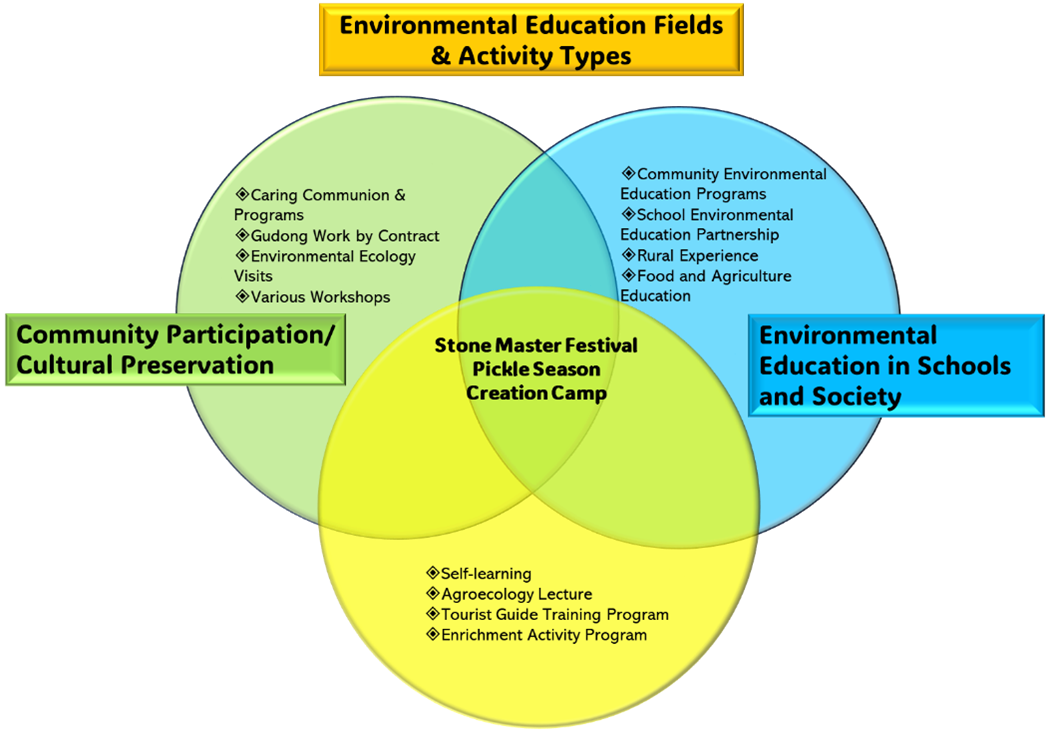
Environmental education is the process of recognizing values and clarifying concepts in order to understand the skills and attitudes necessary for the interrelationships between human beings, cultures and the environment, and it also requires the application of behavioral norms for decision-making and self-positioning in relation to environmental quality issues. Therefore, environmental education is not only a static narration and presentation. Instead, it is expected that the participants can experience the importance and content of environmental education through the design of different activities and participation, which then influence their own environmental attitudes and behaviors. While people are considering the overall environmental ecological carrying capacity, social carrying capacity and facility carrying capacity for the planning of the optimal carrying capacity of a specific environmental education site, they often ignore the dynamic seasonal time factor. However, if the environmental education site wants to implement the concept of the optimal carrying capacity of the site environment, it is necessary to implement the concept of the environmental carrying capacity of the site environment in the context of the existing business objectives, resource management, experience of the trainees, environmental guidelines and environmental management. By positively influencing the behavior of the participants through the promotion of environmental education, the overall quality of the environmental education site can be improved and sustainable development can be achieved. The picture below shows the status of environmental education activities:
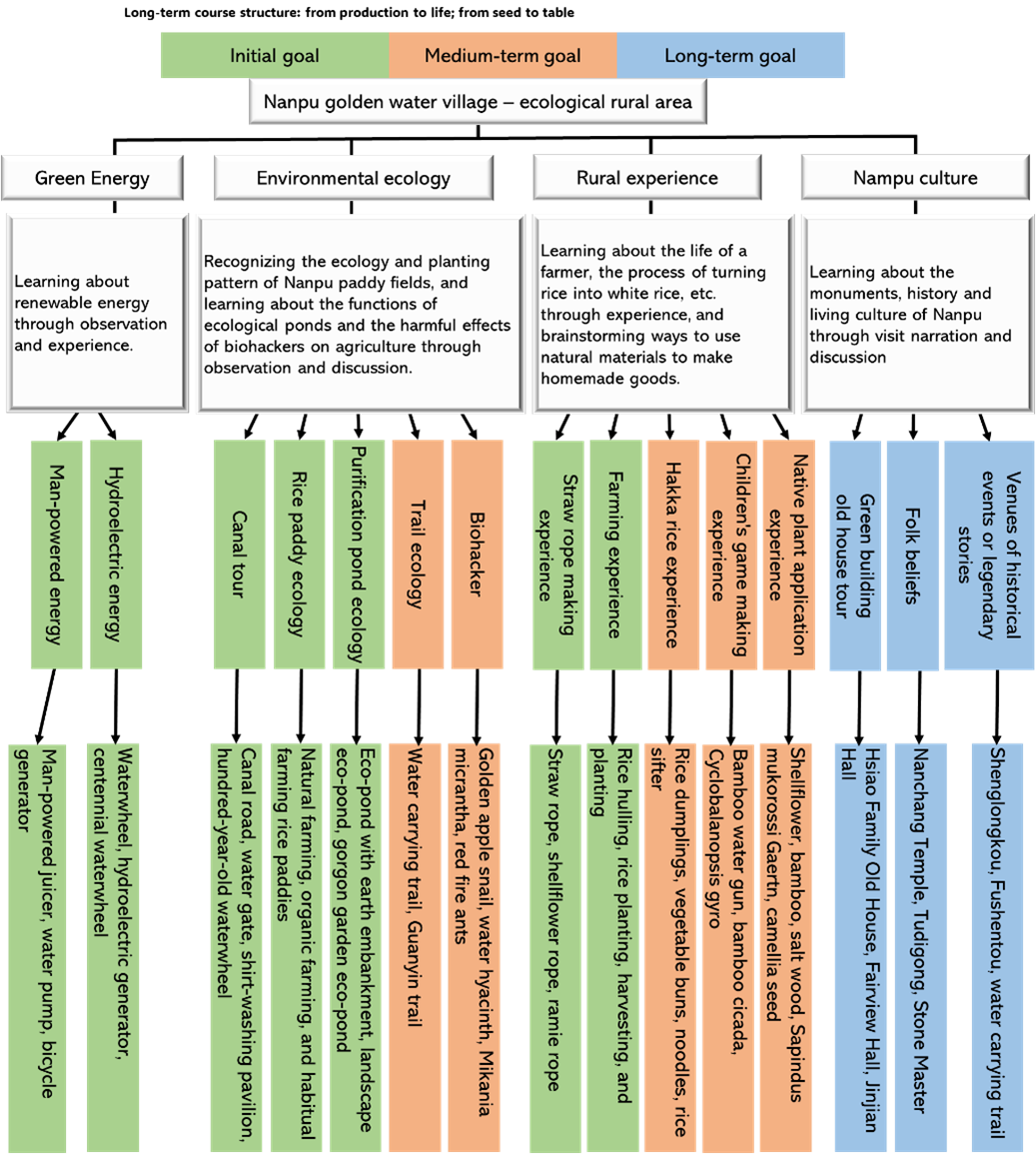
- Rural experience
Currently, various agricultural experience courses have been conducted one after another, and the results have been well received. They will be integrated into the original activity structure, and agricultural knowledge lectures or hands-on tutorials will be organized from time to time, with the hope of enhancing the value of local farmers’ agricultural-related experience.
From Nanpu’s cultivated land, we can still feel the strong sense of seasonality in farming, such as biannual rice cultivation, mustard, kumquat, sweet potatoes, stone persimmons, and radishes, etc. Based on this, we have planned the corresponding activities – planting rice seedlings, cutting rice seedlings, pickle seasons, picking kumquats, and pulling radishes, etc., and have integrated the aspects of irrigation facilities in Nanpu Canal, different farming methods and field observation, and food nutrition and preservation into the activities, so that the team tries to follow the rhythm of the growth of crops to offer the rural experience. On average, 20-40 rural experience activities or courses of different sizes are held in a year. It is Nanpu’s concept of promoting rural experiences in combination with environmental friendliness from direct contact with the land to abstract environmental values.
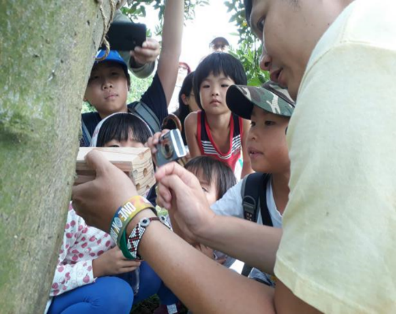
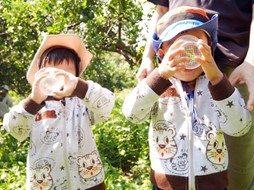
- Food and agriculture education
As indicated by the environmental education review in August 2016, Nanpu’s overall environmental education goal is to add environmental knowledge explanation and discussion to the existing natural and cultural connotation of the community, and gradually increase food and agriculture education programs of the essence of rural production. In 2017, in conjunction with the program of Soil and Water Conservation Bureau, we provided the food and agriculture education training and fieldwork in cooperation with Beipu Junior High School. Through the program of Youth Returning to Rural Areas, we conducted an adult food and agriculture education program – Flip the Taste, where local ingredients were utilizes in an attempt to make innovative dishes, the practice of using traditional ingredients continued to support environmentally friendly agricultural products. We also carried out cross-regional inventory and consolidation of rural ecological resources, hoping to expand the time and spatial scales of the belt plan for promotion by combining regional forces.
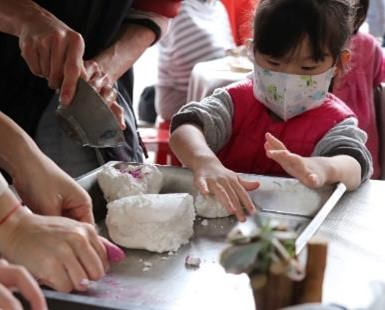
- Narrator training
Since 2007, we have been training seed narrators from time to time to regain the confidence and pride of belonging to the community via discovering the characteristics of the community at all levels. Through continuous consolidation and cultivation, we are steadily enhancing the sense of identity and mission for the community, and spreading Nanpu’s characteristics and the concept of caring for the nature of our hometown or other concepts of friendly environment to a wider range of people with a common understanding. The table below shows the teaching staff and their qualifications.
| Teaching staff | Qualifications |
| Hsin-Chi Chiang | Bachelor’s degree from Hsinchu Teachers College, retired elementary school principal, Chairman of Two Rivers Cultural Association of Hsinchu County, Convener of Elementary School Local Teaching Materials Editorial Committee of Hsinchu County, Editor-in-chief of Brief History of Emei Township, Facilitator of Hakka Affairs Council’s Beipu and Zhudong Cultural Census Program, Instructor of Nanpu Seed Teachers’ Seminar on Environmental Protection Education, completing 12 hours training in Environmental Education Volunteer Workshop of Environment Protection 2012. |
|
Tze-Chiang Wei |
Narrator of The Society of Wilderness, Program Manager of Cultural Census of Hakka Affairs Council 2007, Manager of Nanpu Community Diversified Employment Program, Nanpu Natural Farming Practices Farmer, Nanpu Canal Repair Record Keeper |
| Chun-Chu Chiu | Teacher of Natural Science of Emei Elementary School, Narrator of The Society of Wilderness, Nanpu Community Ecology Narrator, completing 14 hours of training for Nanpu Environmental Education Seed Teachers by Soil and Water Conservation Bureau |
|
Chun-Chu Chiu |
Community Planner, Narrator of The Society of Wilderness, Project Manager of Zhudong Township Cultural Resource Census of Hakka Affairs Council 2011 and 2013, Instructor of Nanpu Environmental Education Seed Teacher Training. |
|
Shu-Hui Wang |
Straw Rope Maker, Bamboo Weaver, Nanpu Recreational Agriculture Farmer, completing 14 hours of training for Nanpu Environmental Education Seed Teachers by Soil and Water Conservation Bureau |
|
Chien-Chin Chuang |
Straw Rope Maker, Bamboo Weaver, Nanpu Recreational Agriculture Farmer, completing 14 hours of training for Nanpu Environmental Education Seed Teachers by Soil and Water Conservation Bureau |
|
Shu-Hui Huang |
Nanpu Natural Farming Practices Farmer, Operator of Mama Mia Farm, Lecturer of Nanpu Community Industrial Revitalization Course, Social Representative and Store Manager of Homemakers Union Consumer Co-op |
|
Shao-Chung Chen |
Owner of Youdiancao Eco-Farm, Director General of Nanwai Community Development Association, Lecturer of Zhuqian Community College, Ecology Instructor of Qiedong Elementary School, Narrator of The Society of Wilderness |
|
Shu-Ling Yeh |
Certified Environmental Protection Environmental Educator of the Executive Yuan, Food and Agriculture Education Seed Instructor of Hsinchu County, Program Manager of Nature Valley Environmental Education Base, Narrator of The Society of Wilderness |
|
Gui-Chin Chien |
Narrator of The Society of Wilderness, Program Facilitator of ” Hengping Back Trail Eco-Guide Resource Survey Training Program of Donghe Community 2011″, Volunteer of Butterfly Garden of National Tsing Hua University |
II. Industrial sustainability for harmony with nature:
The community understands that in addition to the growth of hardware and software in rural areas, the cultivation of economic industries is an extremely important part of sustainability. Soil and Water Conservation Bureau has assisted in the creation of the community, so that young people have gradually increased their willingness to return to the community and found room for development, and then it will independently link up with different ministries and departments for the purpose of cross-sectoral resource mobilization.
- Economy and industry of the community
In the process of rural regeneration and development, the community applied for the Nanpu Golden Water Village Industry Development Program of Soil and Water Conservation Bureau to conduct such basic inventories as resource surveys and analyses, agricultural specialty product development, product certification and packaging, and creative advocacy products, etc. In addition to rice, there are citrus orchards, persimmon orchards, bamboo groves, groundnuts, taro, and other cash crops. Due to the terrain of the farmland, there is a convenient irrigation system. Nanpu’s four main agricultural products, namely rice, citrus, persimmons and groundnuts, together with the local sunset, are the five images of the Nanpu Golden Water Village. Since 2012, the community has applied for the Diversified Employment Program of Ministry of Labor to create employment opportunities and output value. During the process, the community has developed rice processing and series of citrus products to increase employment opportunities for young adults and women in the area, as well as other peripheral benefits, such as the sale of farm fruits and vegetables, to increase the income of farmers. The continuous operation began to move towards independent operation in 2016.
- Micro social enterprises in the community
Nanpu is moving towards a micro social enterprise model, utilizing the integration of small farmers to achieve a sense of coexistence and co-prosperity, and gradually improve the crisis of the disappearance of rural farmland and natural landscapes, the outflow of young adults, village dilapidation, etc. It is hoped they can do their part for the local community through the provision of agricultural products or experiential education activities that are environmentally friendly or promote the protection of natural ecology. They insist on the purchase from small farmers for small quantity without exploiting. They make the purchase at reasonable prices with integrated marketing, and after deducting the basic operating costs, they give back the revenue to local small farmers, students, the fund for caring for elders and communion and the promotion of environmental education.
- Rural Nanpu and the spirit of life culture
The history of Nanpu’s industrial development is closely related to the properties of the settlement. First, there are many old houses in the village that have a close relationship with the living space, such as Jinxiutang and Jinjiantang, both of which are old houses located in the countryside. The second is the waterway (or canal) which is directly related to the industrial space, this is the waterway that the Hakka people drew from the Beipu Cold Spring to irrigate the farmland when they came here to cultivate the land, which has been more than a hundred years old. In addition, the facilities that were derived from the canal, such as the old waterwheel and the laundry space, are still in operation today, which is a spatial scene that seems to represent the scene of the pioneer’s cultivation a century ago, and it also demonstrates the simplicity and antiquity of Hakka villages in Nanpu, as well as the historical and cultural value of this special village.
Due to the advancement of technology, the agricultural production methods have also changed. In the past few years, pesticides and chemical fertilizers have been used heavily on the farmland, which has disturbed the agro-ecology and decreased the yield; therefore, the community maintains the agro-ecology of the community in the following ways.
- Establishing a rational crop rotation system to improve soil quality.
- Replacing chemical fertilizers with organic fertilizers.
- Using natural enemies instead of pesticides.
- Avoiding the inflow of toxic substances into the farmland.
In order to maintain the complete ecological green network and natural ecological environment of Nanpu community, we should preserve the forests on the periphery of Daping River, the green belts on both sides of the waterway of the community, and the conservation land on the south slope of the community, to avoid the flow of agricultural and chemical fertilizers into the river and canals, to prevent soil erosion and wind damage, to improve the microclimate of the farmland, and to provide movement paths and habitats for animal. In the rural ecological development area, mainly the current green belt development is maintained, while large area and medium to high intensity development should be avoided. As part of the rural rambling path belongs to the rural ecological development area, its development should avoid destroying the natural environment, with a main focus on the construction of rural rambling paths and simple open space leisure facilities.
III. Creation of living space and environmental landscape
With the coexistence of clustered and dispersed patterns of rural settlement, and a well-preserved rural society, Nanpu Village is located in the south of Beipu Township (Hsinchu County), among the mountains, with endless flat fields, green farms, simple and elegant courtyard houses, and it is a traditional and simple Hakka settlement. The main road is the Chu 45 Line, which makes it very convenient for traveling to the north and the south. But, with little development, the natural ecology and primitive landscape are preserved. Daping River embraces the whole village gently from three sides like a mother, and the thick mountainous terrain sits in the back as a barrier in the south, forming the Guanyin Lotus feng shui, creating the generous folk style of Nanpu over the past hundred years.
The map below shows the direction of Nanpu’s houses, with the Guanyin Lotus as the central axis.
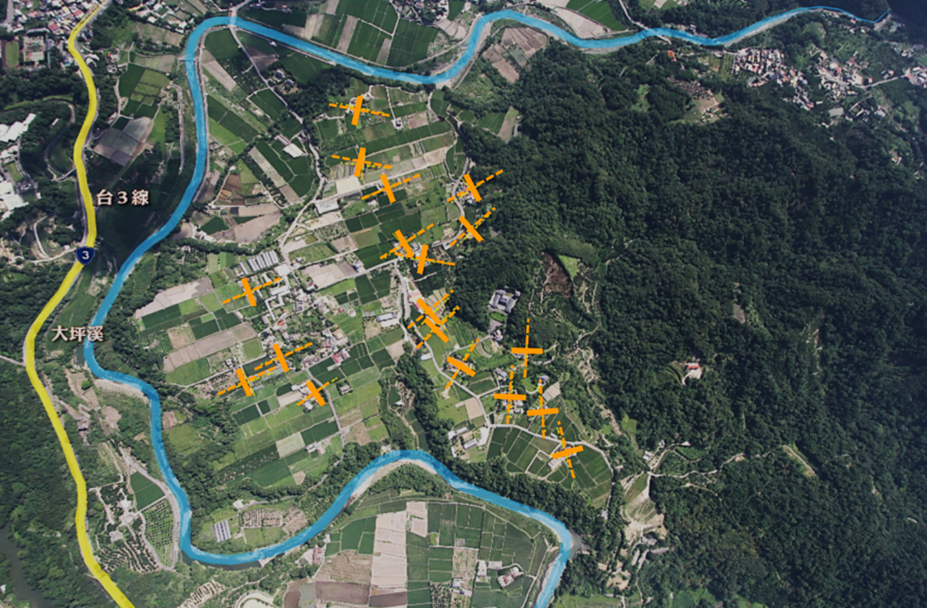
1.Traditional green buildings
Nanpu still has a number of well-preserved Hakka houses, including Jinjian Hall (Zhang House), Fairview Hall (Zhuang House), all built in the direction of the Guanyin Lotus, with the axis of the house facing the top of the Guanyin Lotus Mountain top, which has a strong dragon energy. The principle of the location of the house is to face the field with a backdrop of the mountain, which is very unique. There are also Hsiao Family Old House, (Hsiao Ju-Sung Old House), Guo Family Old House, etc.
The community strives to preserve the integrity of the old houses and uses traditional red tiles and local timber to renovate them. These traditional old houses are built according to the local conditions and are close to the pulse of life, and they have even become a popular location for TV drama filming. In order to balance the preservation of the old houses and the development of the community, the community is promoting a variety of activities by combining “cultural tourism” with “environmental education”.
-
Canal and Nanpu living space
Laundry Pavilion is the landscape with strong rural characteristics. In the past, people needed to go to the stream to wash clothes, and women gathered there, so a simple shelter was built for shade. In order to maintain and continue this traditional custom, the villagers hired laborers and purchased materials in 2007, and the pavilion was designed and built by the community partners to improve the surrounding environment. This pavilion is still frequently used by the residents now. Because of the water of the canal next to it is clean and refreshing, children will be playing in the water here in the summer.
Despite the hustle and bustle of Beipu’s downtown area, Nanpu Village still maintains its original quiet lifestyle as the sound of the business is isolated due to the separation by a river. In addition to the scenic beauty and abundance of agricultural products, the humanities and history of the old houses make people think about the past and reminisce about the old time. In the early days, farmers relied on water trucks to bring water for the irrigation of farmland. But in the past, as the canal fell into disrepair, the upstream tunnel collapsed and silted up, the amount of water available to the village diminished every year, and most of the farmland in the middle and lower reaches of the canal was left fallow due to the lack of irrigation water. At that time, all the fields that could be cultivated had to be irrigated by pumping for their own water.
In order to restore the vitality of Nanpu’s agricultural production, after more than a year of discussion, planning and design, fallow began in 2008, and the entire Nanpu canal was revitalized through the programs for the promotion of rural regeneration. This has in turn promoted the development of agriculture in this area in the direction of organic and healthy agriculture, and the water and the waterwheel has become nostalgic representatives of the cultural assets of the rural life.
-
Friendly space creation
Environmental improvement work is based on the overall plan developed by Nanpu to gradually complete the construction of public facilities, the creation of leisure spaces and the enhancement of living spaces and other important projects; in recent years, in conjunction with the operation of the environmental education field, Google positioning, various explanatory signs and guide maps, etc. have been built, so that the community navigation and explanation system is more completed. The environmental space around the village’s belief centers – Nanchang Temple, Stone Master, and Shuitou Land God – has been gradually improved during the process of agricultural revitalization, and the operation and maintenance are mainly managed by the community work teams and environmental volunteers, while all the residents living in the public space of the road indicator system have taken the initiative to maintain the neatness and cleanliness.
- Rural landscape and life culture
Nanpu’s culture can be divided into tangible and intangible culture. Tangible cultural assets include large and small ancient houses in the village such as Sanheyuan, Fairview Hall, Jinjian Hall, Jingang Temple, the hall of ancient agricultural tools, the century-old water wheel, Laundry Pavilion. The intangible cultural assets include the belief in Stone Master, the belief in Land God, Hakka rice culture, bamboo weaving skills, straw weaving skills, heritage of puberty rite, Mazu’s circumambulation, and the innovative cultural revitalization of the Pickle Bucket Percussion Troupe, and so on.
- Tangible cultural assets
Nanpu cultural landscape:
(1) Beliefs: Nanchang Temple, Stone Master Park, various spaces for Land God.
(2) Residence: Fairview Hall, Jinjian Hall, Henan Hall, Julu Hall, Gauping Hall…etc.
(3) Ceremonies: Xiao Family Cemetery, Jiang Family Cemetery
(4) Economic lifeline: The Century-old Water Wheel, Hundred Years’ Water Canal, The water gate, Fushentou, Laundry Pavilion.
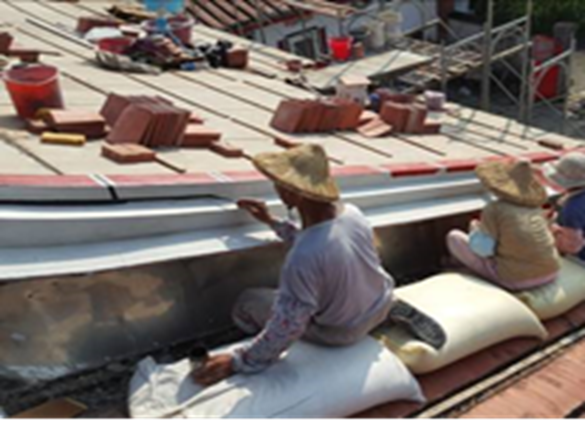
Since the reclamation of Beipu Daai area in 1832, Nanpu was the first reclaimed land. When the irrigation canal – Nanpu Canal was completed in 1845, the reclamation work was more or less finalized. But there were still many aboriginal people living in the neighboring hilly areas, and there were often armed fights between the two tribes. It was not until the construction of Fairview Hall by the family reclaimed the land in 1882 that the scope of Hakka life was extended outward, which is why the local people call this building “New House” (New Residence).
The renovation of Fairview Hall in 2016 is an important milestone for the preservation of tangible cultural assets in this community. Because many intangible rural skills and tangible cultural assets with great local value are rapidly disappearing, the community has taken advantage of the renovation process by the national treasures mason, Master Ming-Kuang Fu, and the operation by the community partners to record the intangible cultural assets in the countryside and to preserve the tangible cultural assets. This has fulfilled the value of preserving and maintaining traditional buildings, and the continuous preservation and maintenance mutually passed on the value. The picture below shows the state of the restoration of historical monuments by national treasure experts:
2. Intangible cultural assets
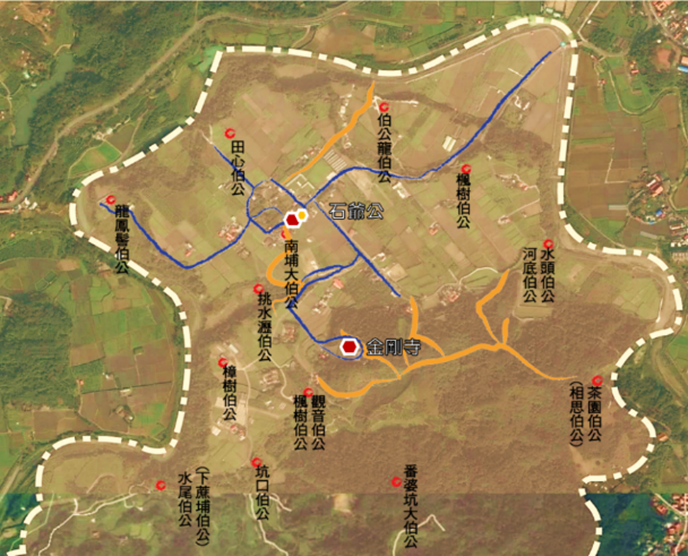
There are Nanchang Temple, Jingang Temple, Stone Master and 13 temples of Land God in the community blessing Nanpu. At the Stone Master Festival, an important celebration of 100 years of heritage, people pray for the safe growth of children, the coming of age ceremony, changing the “rope”, community handicrafts and land god culture, are preserved, and related souvenirs for Stone Master Festival are designed. The Stone Master Festival allows the residents of the community to actively plan and participate in the event, and to complete the event successfully by working together to fully demonstrate the centripetal force and cohesion of the residents towards their hometown, show the local characteristics, spread the traditional Hakka culture, and implement the rooting of the Hakka culture and arts. The community has been actively promoting environmental education to educate the next generation on how to respect life and care for the land.
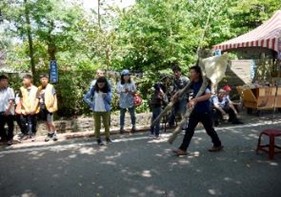
Nanpu also recognizes the importance of valuable life skills.
(1) Bamboo weaving: bamboo fans, bamboo baskets, bamboo dustpans, charcoal cages, cow’s beak cages, citrus cages, chicken cages; (2) Straw weaving: straw ropes, straw knives, straw pinwheels, scarecrows; (3) Children’s toys: bamboo cicadas, bamboo chopsticks guns, bamboo dragonflies, air bamboo guns, bamboo water pistols, piggy mouths, and Hakka bamboo drums; (4) Daily life: tea soaps, traditional lye water, charcoal.
The following is a list of related publications for cultural promotion of Nanpu:
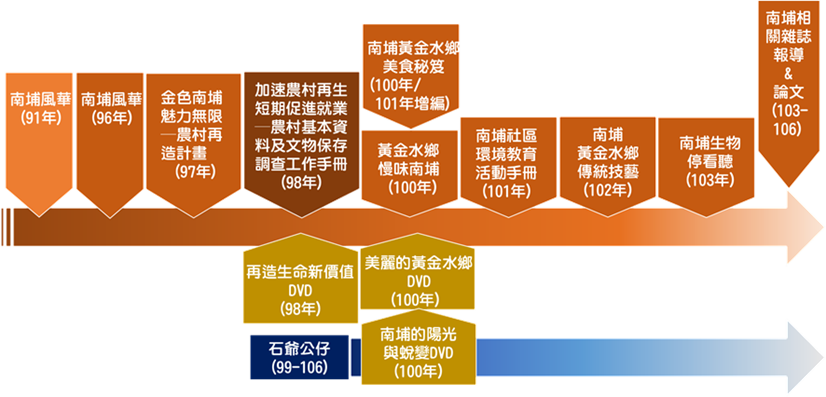
- Innovative cultural revitalization
Swing Nanpu, Drumming the Countryside was born through an innovative combination of percussion and theater. The members of the Pickle Bucket Percussion Troupe are all elders from the community who use the spare time in their busy farming schedules to perform with the arrangement, direction, coordination, training, and making of props (pictured below) led by Mr. Chin-hui Chen. By incorporating local stories, traditional arts formations, and self-written songs and dances, their performance is of unique style and very popular. In 2013, the troupe won the Best Drama Performance Award of Village Drama Performance of Ministry of Culture. In 2014, the troupe was invited to tour all over Taiwan for 50 performances, which was very well received, and the media coverage has enabled more people to know about Nanpu’s story.
Results
Since setting the vision of “Happiness, Laughter, Vitality and Sustainability – Nanpu Golden Water Village” in 2006, we have been reviewing and adjusting the vision every 5 years. At present, Nanpu has completed the short-term goal of 10 years, and we hope to make the industry and the environment co-prosperous in the next stage, and move forward to the next decade. The next 20 years will be for the medium-to-long-term goal, and we hope to move forward with the four major goals and six themes.
Nanpu has a composite rural ecosystem, which is the result of the interaction between the lifestyle of the people and the natural environment. We believe that we should put aside administrative boundaries, because the mountains, the water, the grass and the trees are inextricably linked. If the upstream is polluted or heavily developed, then we wouldn’t have the environment that we have now, so the concept of a co-prosperity with the environment needs to be guarded by all of us, regardless of the administrative boundaries. Nanpu has always been based on the core principle of maintaining a balance between ecological diversity and resource sustainability, the overall awareness has been shaped for a longer period of time, and the implementation has become more mature. Nanpu was recognized by the review committee members and selected as one of the potential rural villages in Lishan in 2017. Therefore, we look forward to becoming a leader for influencing the neighboring villages, awakening the awareness of Lishan’s common good and gradually implementing it.
-
Regional scale conservation measures-ecological diversity
The overall area of Nanpu Village is approximately 519 hectares. Nanpu actively promotes conservation measures targeting the coexistence with the environment on a regional scale, We have returned to the rural nature of the speed of life to look at the natural environment and human coexistence and co-prosperity, while retaining the characteristics of modern civilization, to resist industrial pollution, to slow down the overpopulation of exotic species, and to avoid over-quantification of specific species (e.g., following the trend of propagation and planting of plants and animals). Also, we support the green power generation and friendly management of small-scale farming to feel the rural environment in its original state, and have farming in a more natural way. In addition to minimizing the pollution of agricultural products, we have also restored the original vitality of the village. For example, frogs, unicorns, earthworms, golden turtles, cicadas, etc. all have been nurtured by the low pollution of the soil, and dragonflies, damselflies, fireflies, and parasitic wasps, etc. have also arrived. resulting in an increase of 50-70% of biodiversity in the overlapping area of human living space and production..By giving the land and the organisms that live there a chance to breathe and circulate, Nanpu hopes to take the lead in promoting the concept of eco-diversity and gathering a consensus on the environment among the communities.
-
Developing specialty industries
(1) Encouraging diversified cultivation
The goal of Nanpu community from the beginning to the end is to work together to maintain quality of life and friendly agriculture. It encourages diversified planting so that the land nutrients will not be absorbed by the plant monoculture, and seeks to take into account the balance between the maintenance of biodiversity and the sustainable use of resources to help biodiversity for ecological gradual restoration, so as to implement the concept of “good ecology in order to have a stable and sustainable industrial development”. It endeavors to enhance the willingness to cultivate friendly farmland (farm), and to link the ecological environment and natural scenery of different seasons between settlements and the flavorful crops produced in four seasons.
(2) Industry giving back to local community
Nanpu community has been paying great attention to social welfare and care for the elderly for many years, hoping to create a space of active aging with no gap between the generations. The current birth rate is stable. In the future, it is hoped through the combination of elderly care and child care, the school education can be introduced to the community’s elderly care services for the continuation of the social welfare feedback and gradual improvement of its systems.
-
Preservation and innovation to continue traditional culture
The extension of the use of traditional green buildings is to ensure that Nanpu’s precious traditional architectural style and rural landscape can be preserved forever. Residents should have a consensus to avoid farmland development. The hardware landscape of the community such as directional signs, signboards, etc. will be unified, the regulations of the self-governing committee will be improved year by year, the restoration and adaptive reuse of the traditional village houses will be continuously and actively promoted, and the natural ecological and primitive landscape will be preserved at the same time.
In terms of increasing the value of traditional rural ingredients or processed products by small farmers, Nanpu connects the ecological environment of different settlements in different seasons and crops and pickles produced in the four seasons, as well as uses innovative combinations to improve the public acceptance of traditional rural meals or folk plant applications.
-
Leading neighboring cross-discipline participation
In addition to the industrial promotion via Nanpu’s rural life, industry, culture, and natural characteristics, we hope the public can experience the most real-life rural activities to achieve non-commercial behavior of the rural industry marketing. After the public purchase and accept the precious ingredients produced by the land, they can be encouraged to gain the knowledge of food, cherish the food, love nature, eat local products that are in season to support the rural areas with their own actions. When the booth grows into the Nanpu Selection Small Farmer Platform, it is not increasing visible revenue only. The most important thing is to plant the seeds in the hearts of the visiting public to protect the land with Taiwanese farmers, from choosing environmentally friendly ingredients, purchasing Taiwan’s homegrown products and emphasizing environmental issues, to understanding that without a good ecological environment, there would be no good grains, vegetables, fruits, ducks, fish, and meat to consume. Thus, the rural industry can survive sustainably.
- Sustainability outlook
Nanpu and the BenQ Foundation work together to provide nearly 4,800 kg of friendly rice annually, and the number of shares pledged by the Gudong Club has accumulated to 3,650 in 20 installments since 2013 (1 share equals 10kg), which protects the farmers’ basic livelihoods and indirectly preserves the land. In Nanpu, through partnership, rural development is not unilaterally accomplishing each one’s goals and objectives on schedule, but slowly building up the concept of giving back to the community, being committed to cultivating the roots of the local community, providing welfare for the elderly, and conveying the environmental friendliness concept to the people outside the area. This not only has a positive ecological impact on the coexisting relationship with the environment, but also enables a sustainable development through cooperation and stabilization of mutual support between communities. Recreational agriculture that is based on community and culture, and sustainable in terms of ecology, livelihood and production, will create new agricultural values for Nanpu. Encouraging the young and middle-aged population to return to their hometowns to engage in agriculture will not only improve the unemployment problem and the problem of elderly care in the countryside, but will also reduce the pressure on the government.
Nanpu connects neighboring rural villages to form an ecological rural group and shares experiences based on the Satoyama spirit and rural humanities, as well as the principle of knowledge commonality and sharing. Nanpu is committed to establishing the fundamental concept that the ecological environment is a consumer-friendly, nature-friendly agricultural industry development, and gradually assists local agriculture in transforming into environmentally friendly farming methods. Nanpu residents make discussions based on the original intention of coexisting with the natural ecology and creating good agricultural products, as well as reach a consensus with the workshop during the meetings. Externally, Nanpu plans in the direction of rural experience and local food and farmer feasts, establishes agricultural operation cooperatives and small farmer self-management, conveys the concept of respecting natural land maintenance, and achieves sustainable operation of rural ecology and industry.
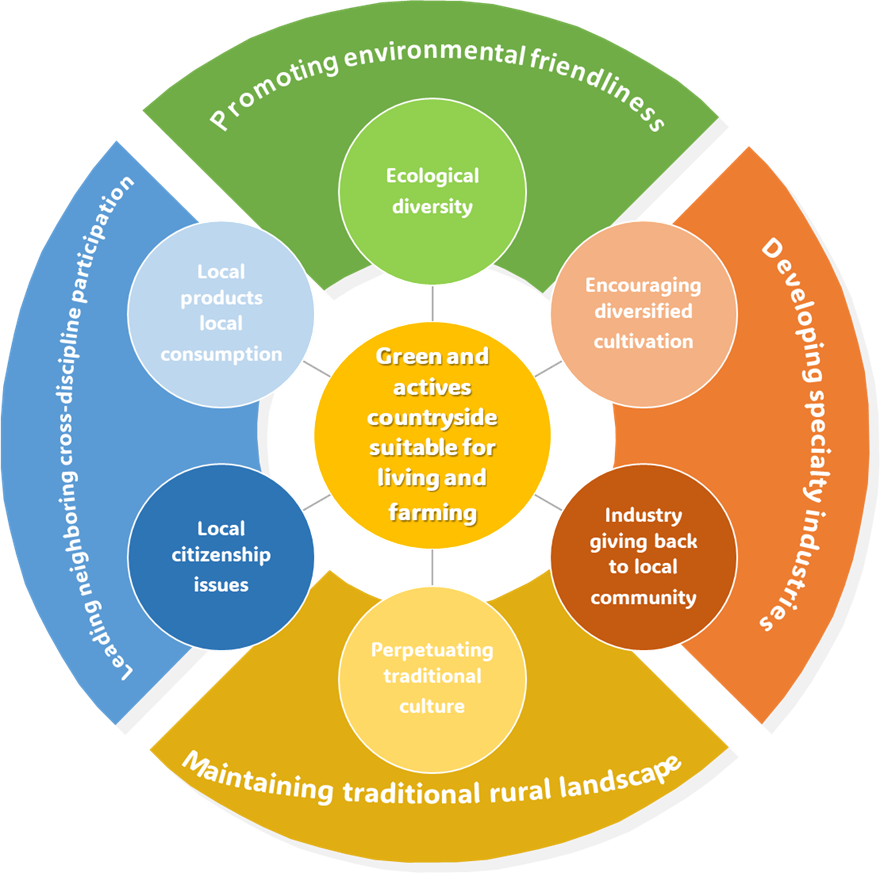
Lessons Learned
I. Restoration and revitalization of Nanpu century-old canals to renew rural industry and Hakka culture
There are two major canals in Hsinchu County, one is the Chudong Soft Bridge Canal and the other is the Nanpu Canal, whose main function is to irrigate farmland. Both canals use the water of Beipu Cold Spring as the source for diverting water to irrigate farmland in the Nanpu area. The canals are diverted from Dalin Village, and the water is diverted to the farmland in each area via the water gate of the water flow through the diversion tunnels dug by the local ancestors. Depending on the size of the irrigated area, there is a difference in the size of the diverted water flow. Canal culture is an industrial space of water resources left by traditional Hakka mountain villages, and is of extremely important cultural and historical value because it still has the function of irrigation. It can also continue the spatial memory and the life scene of the residents of the community, contains the wisdom of people to get along with the space, and is an example of the maintenance of historical space as the value of the future generations.
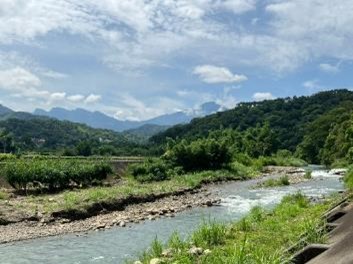
At the end of 2008, the residents of Nanpu Village were faced with the dilemma of a lack of water, and through many hours of hard work, the entire village came to a consensus and decided to lay fallow for a year in order to restore the century-old canal; 4 seniors, with the sum of nearly 300 years of age, removed the silt in person, which not only built a consensus among the residents of the community, but also created our own rural landscape. The historical significance of the canal in the Nanpu community is high, as it is an important source of water for the local agricultural industry. After the completion of the canal improvement, the canal is a rich landscape resource for Nanpu, and via the removal of silt from the caves, solving the structural leakage of the canal, and improving the quality of the water, we are able to revitalize the space of the canal with its historical value, so that the canal is completely integrated into the community’s life.
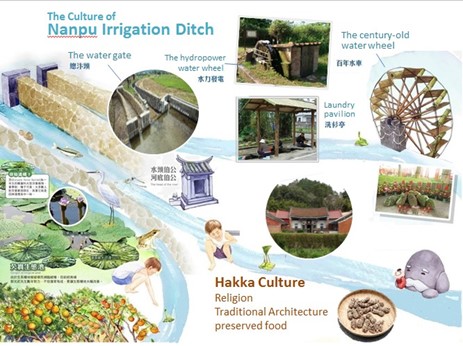
II. Introduction of rural regeneration has revitalized Nanpu
Since 2000, when the Agency of Rural Development & Soil and Water Conservation began promoting the Fuli Rural Development Program, the Soil and Water Conservation Bureau has designated the Rural Reclamation Pilot Area Program, and members of the community have been fully supportive of the implementation of the program, resulting in a much-improved living environment. In 2011, the first Rural Regeneration Program in the nation was adopted, laying the groundwork for the transformation of Nanpu into a rural community, and the returning youth and the joining of connection population have enabled the gradual transformation of the community.
- Gathering of old, middle-aged and young people to create opportunities for organizational optimization
The organization mainly takes Nanpu Community Development Association as the external window, and there are also Nanpu Industry Association, Nanchang Temple Management Committee, Nanpu Village Office, Community Mothers’ Classroom, Longevity Club and Nanpu Community Care Center. These organizations support and coordinate with each other on community affairs, and work together on the overall management of the community. They hold forums from time to time to discuss the content of the implementation or participate in the relevant education and training, and prepare self-funding support to strengthen the implementation capacity. In the past, under the guidance of the Soil and Water Conservation Bureau, and with the completion of the repair of the canal, we have gained more confidence in the promotion of friendly agriculture, so that many young people are willing to stay in Nanpu to rent land for farming or to utilize environmentally friendly ingredients for innovative development. This has also boosted the confidence of the second generation of farmers to come back to their hometowns, such as the son of Beipu’s rice class leader Xie, who went back to his hometown to develop a rice nursery center, the second generation of the Luo family’s orangery who is assisting in helping develop internet marketing, the second son and the son-in-law of the friendly farming expert Mr. Guang-wu Guo who took over the farming of the friendly environment rice farming and runs the natural orange orchard and the Toyota Natural Chicken Farm. The power of young adults is slowly fermenting in Nanpu.
After the young people are stationed one after another, they also develop new models related to rural development and marketing, and gradually put forward the points that can be improved by considering the situation of the community. They actively discuss and divide the work with the community partners for improvement, such as window management system, warehouse management, the unification of inventory data in the community, the linkage of small farmers and so on. In addition, they develop different modes of excursion related to the rural development and marketing, and summarize and evolve them. They cooperate with the junior high schools in remote countryside for food and agriculture education, calculate the cost and unify the activity flows and quotes, and link with neighboring small farmers to cultivate seed education teachers, etc. In terms of administration, there has been a preliminary setup of basic data electronically, and at the same time, the importance of database integration is recognized. Especially, the accessibility of the community’s knowledge of local ecology and literature and history is still low in general, as such knowledge is mostly presented in narratives, which makes it difficult to promote in-depth research and exchanges in the community. Nanpu community still emphasizes traditional knowledge and maintains a number of rural assets that are still in operation, not just the attractions for display. Through database integration and opening, along with workshops, we have created a mode of application of local knowledge, and are moving towards paperless presentation in various assessments and competitions. The results of the joint efforts of the young, middle-aged and old people are reflected in the 1st Gold Medal Rural Gold Medal Award of the Council of Agriculture, the Executive Yuan in 2018 and the 5th National Environmental Education Award of the Environmental Protection Administration, the Executive Yuan in the same year. We hope to expand our resources and train more partners to work together to create greater benefits.
We are resuming the rural life pace to look at the coexistence and co-prosperity of natural environment and people to generate a sense of trust, while retaining the characteristics of modern civilization, resisting industrial pollution, slowing down the overpopulation of exotic species, avoiding over-quantification of specific projects (such as following the trend of propagation and planting of plants and animals), supporting green power generation and small-scale farming to support the maintenance of organic and friendly operations to maintain biodiversity, and actively retaining the characteristics of the local culture of the Hakka people to experience the original rural environment (the cradle of crops). Through the cooperation of local partners, we try to give the land a chance to breathe and to recycle, and to gather consensus on the environment among the communities.

- Cooperation mechanism of the Youth Promotion of Rural Residency Innovation and Research Demonstration Program
The youth’s presence and rootedness is not only to cooperate and communicate with local farmers who share the same ideas, share the concepts and innovations of agricultural revitalization, and expand and link with the neighboring Ningcun community based on Nanpu’s accumulated experience over the years, but also to learn together the sustainable production model of symbiosis with nature through the planning of workshops and the provision of a variety of practical and experiential knowledge and technology, and organize a shared base in hopes of moving towards the goal of autonomy and taking certain social responsibility in the future. Starting from getting the support and experience from the youth and the core body of the organization, this will then spread to the surrounding rural groups and make the residents’ passion and understanding of their own hometowns’ land continue. Beginning with the establishment of concepts, this will drive the sustainable development of the community and implement the autonomous feedback, while the power of the rural community’s common growth will eventually be expanded to the whole environment and society, so that the land and the people will live and thrive together.
During the process of the Youth Promotion of Rural Residency Innovation and Research Demonstration Program launched by the Agency of Rural Development & Soil and Water Conservation, the young people have developed a number of different customized modules to try, and the young people from other regions have also been brought here for cooperation, with the concept that Nanpu is transformed into a practical training room. In the operation process, it is also easy for the youth to understand the difficulties and skills of the actual operation. Through internal education and strengthening of knowledge and skills, the board games designed and planned by the youth based on the seasonal environment and products of the common base of Nanpu and neighboring Daai Sanxiang, in-depth experiences and rural eco-experiences were synchronized, in the hope of promoting the concept of caring for the environment in this quiet rural area, which is different from that of the old streets or general commercial activities. Through the implementation of each program, we hope to collect and integrate the most suitable industrial model for local development.
Starting from 2017, in order to verify the impact of friendly farming on the environment, the youth in the village recruited young partners with related majors in an attempt of using scientific data combined with ecological and environmental issues to reawaken people’s attention to the flavor value of fruits in terms of production methods, thereby increasing their economic value. In addition, via the introduction of lecturers and related research units to support the micro-photography and analysis of insects, lot of experimental equipment is provided and sponsored by the relevant units, thus greatly reducing the cost of equipment related to this project. Through the process of investigation and intervention, farmers are encouraged to devote themselves to good management practices and produce good quality fruits. After the operation, two orchards applied for organic certification and Cixin certification on their own, and two orchards improved their use of pesticide, and the number of kumquats pre-ordered at the end of the year increased by 8~10%. The term “bio-indicator” refers to the monitoring of the numbers of certain organisms as a basis for assessing the quality of the ecological environment by using the sensitivity of certain organisms to the environment. For example, fireflies, which are characterized by a significant decline in their population due to environmental pollution, are often used as environmental indicators. By monitoring the number and species of insects in the six kumquat orchards for one year, we can collect and record the changes of each group in different environments and time, and the data obtained can be used as an important reference for the bio-indicators.
In addition, these surveys will be an indispensable part of the future development of farmland biodiversity certification. During the orchard surveys, we have also developed a campaign to promote the use of cell phones to take macro photos of flowers, grasses and insects, and these photos have been posted on social media programs, attracting a great deal of attention from the public. Because it turns out that professional photos comparable to those taken with monocular cameras can also be taken with cell phones, this has made people more willing to get closer to the ecosystem and observe the small creatures around them with their hearts and souls. As many people are also highly interested in ecological issues, this can be further developed into a platform for citizen scientists to encourage the public to participate in orchard surveys, which will not only increase the benefits of the survey, but also bring the public closer to the producers, so that they can better understand the relationship between food and the environment, and then pay attention to the importance of friendly farming and the environment.
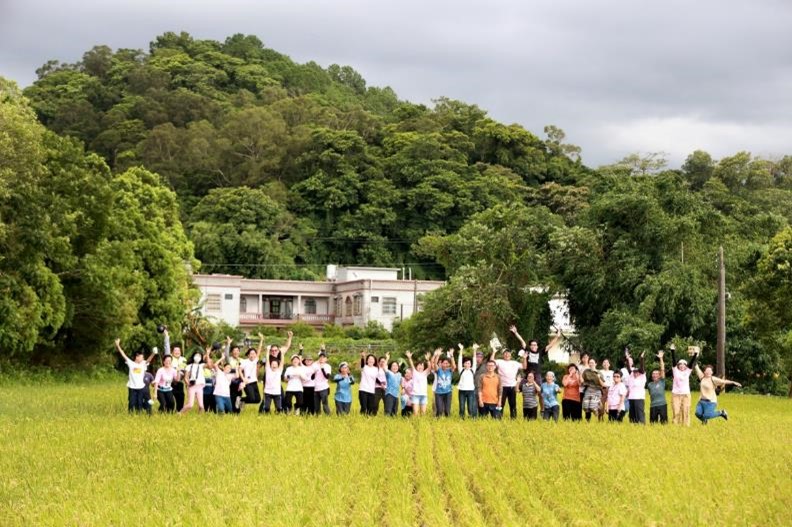
III. Rural common good economic model with life as the axis
Rural areas are facing problems such as aging population, environmental pollution, fallow land, and loss of agricultural land, and it is difficult for young people to return to their hometowns if the income from agriculture is not stable after they come to the countryside. It is extremely difficult to continue the livelihood industries that depend on agriculture due to the lack of consumers. Therefore, the promotion over the years has been aimed at gradually building a network of neighboring agricultural industries and returning to the previous state of mutual support between rural areas and niche economies. However, rural industries are closely related to the pulse of life and the seasons, so after integrating the products of neighboring rural areas and special humanities, we will work together with our rural partners who have a high level of environmental awareness and the same philosophy of industrial development, continue to activate the flow of the niche economy among them through the introduction of friendly industrial activities and the Lishan Life Workshop, and also enhance the effectiveness of the overall cooperation and promotion.
1) Transferring the power of nature to the public
2) Connecting rural villages to cooperate with each other, and increasing the willingness to transform agriculture into friendly farming
3) Establishing the concept of feedback and common good
The vision is to seek a balance between the preservation of biodiversity and the sustainable use of resources. Nanpu’s goals from the beginning to end are to work together to maintain a quality of life and friendly agriculture, to create a settlement of biodiversity for the ecological recovery, and to implement the concept of “good ecology is the only way to have a stable and sustainable industrial development”, to promote the willingness of friendly farming (farmland), linking the different seasons of the colony and the natural features of the ecological environment, and to connect the ecological environment and natural scenery of different seasons and the flavorful crops produced in all seasons between settlements.
Back to the level of feedback, we mainly arrange for the course activities of environmental/ food and agriculture education for junior high/elementary schools in remote rural areas and local elderly communion/physical & intelligence education. In addition to the teaching plans for junior high/elementary schools in remote rural areas in the program, we also train the corresponding seed guides/instructors for small farmers through the promotion of the implementation of the tour program, and we are not reluctant to share Nanpu’s experience with the small farmers or units in development. The community has also been able to improve its overall profitability due to the assistance of the youth, and to give back to the local elders for their care. It is very difficult to maintain basic operations and to take into account the quality of ecology and life in the local community at the same time for a community. Only by making adjustments to allow for appropriate improvements in the overall feedback mechanism, are we able to continue the operation.
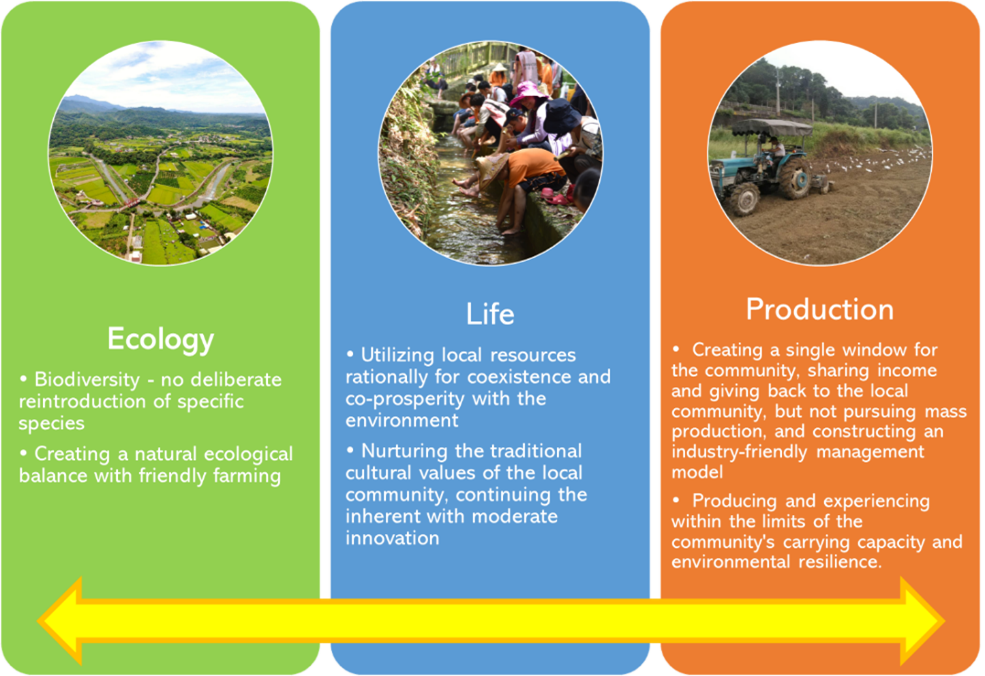
Key Messages
1.Water plays an important role in rural areas, especially in Nanpu, the restoration of the Nanpu Canal represents the coexistence and continuation of the ecology and production of rural life, and is an important link between the people of Nanpu and the living environment.
2.The rural regeneration policies promoted by the Agency of Rural Development & Soil and Water Conservation is effective in creating the confidence of Nanpu people to return to their hometowns or enter their hometowns to develop micro-economies that are in harmony with nature, which is a clear contribution to the maintenance of rural landscapes and ecological environments as well as to the development of a rural economy and supportive social structure.
3.The process of inheritance and cooperation between the old, the middle-aged, and the young brings more diverse possibilities for Nanpu’s cultural continuity, and achieves the consensus of environmental co-prosperity and Hakka life culture inheritance: “Good ecology is the only way to have a stable and sustainable industrial development.”
The preservation of natural and living landscapes, the linking of the ecological environment and natural features of different seasons between settlements, the synchronized promotion from the ecological, economic, social and cultural dimensions, and the establishment of a cross-sectoral collaboration mechanism will effectively enable the local area to enjoy a sustainable development.
References
- Rural Regeneration Project of Nanpu Community, Beipu Township, Hsinchu County
- Nanpu Community’s implementation plans over the years
- Nanpu community related survey results report


